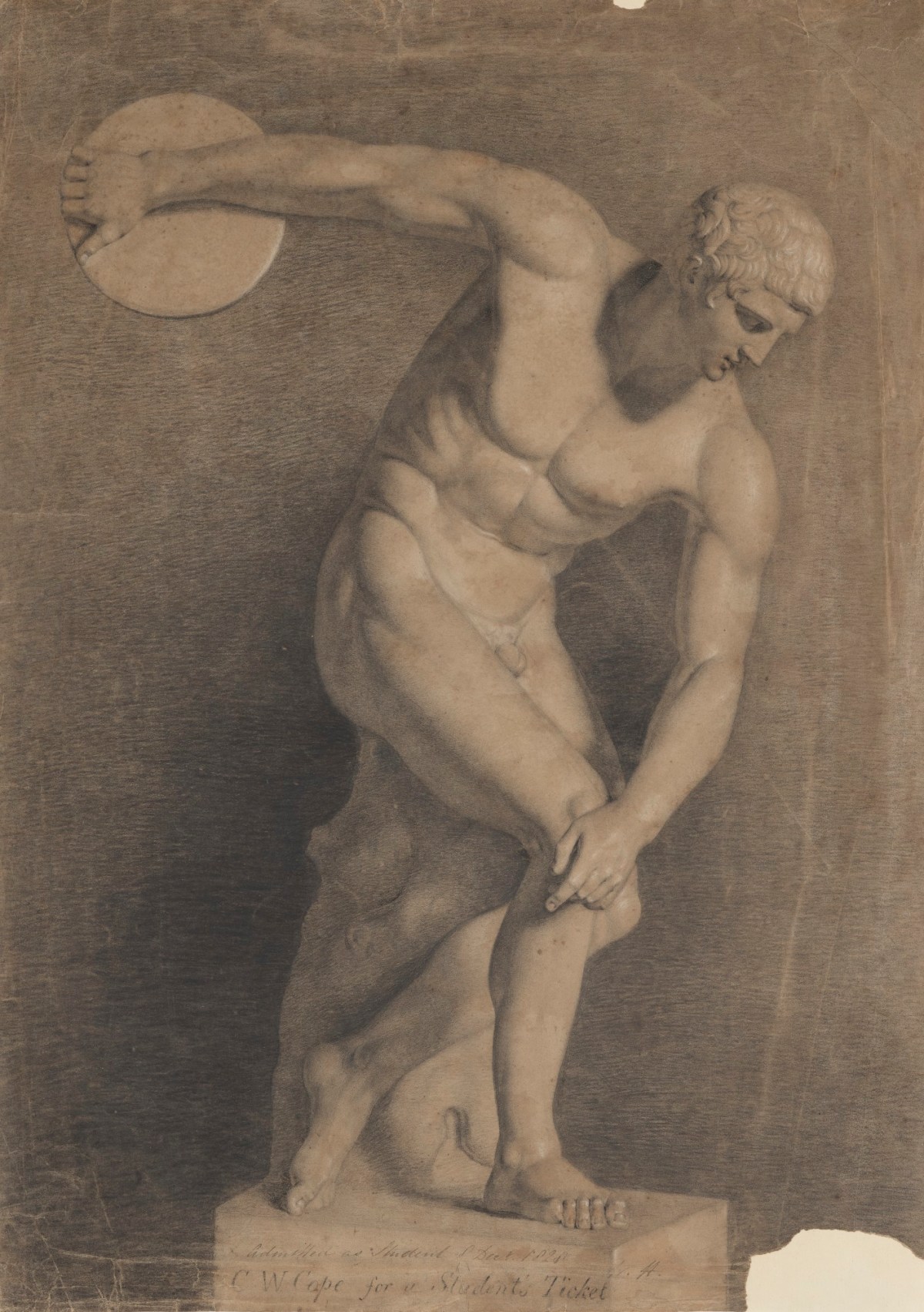
Charles West Cope RA, Drawing of the Discobolus, by 8 December 1828.
Pencil with black and white chalk on buff wove paper. c. 625 mm x c. 440 mm. © Photo: Royal Academy of Arts, London.
This image is not available to download. To licence this image for commercial purposes, contact our Picture Library at picturelibrary@royalacademy.org.uk
Drawing of the Discobolus, by 8 December 1828
Charles West Cope RA (1811 - 1890)
RA Collection: Art
A detailed pencil and chalk study of the Discobolus, carried out by Charles West Cope when he was a 'probationer' at the Royal Academy Schools.
The system for admission to the RA Schools at this time was by submitting drawings for the approval of the RA Council. Students were initially admitted as 'probationers' and allowed to draw from the casts in the Academy's collection for several months at which point they had to produce further drawings as proof of their ability. Once admitted as full students they continued in the 'Antique' Academy and again had to submit drawings of casts for approval before progressing to the Life School. However, it was not the Academy's policy to collect such studies, making this and a handful of others (see 05/1223, 07/ 4244, 07/3674 and 07/3675) a rare and interesting group within the RA collection.
The date inscribed on Cope's drawing is the same recorded in the RA Students' Register as the date of his admission to the RA Schools. The initials next to the inscription at the bottom of the drawing are "W.H." and were almost certainly written by the Keeper of the Schools at this time, William Hilton RA. It was the Keeper's responsibility to put the drawings before Council and it seems to have been common for him to sign or initial the works to indicate that they had been approved. Cope's own inscription below Hilton's was probably written after the Council had seen it, as drawings were submitted unsigned in the interests of fair play.
The figure drawn by Cope is very similar to the famous stooping 'Discobolus of Myron', excavated in 1781 on the Esquiline Hill in Rome (now in the National Museum of Rome). However, the head of the statue shown here faces to the front rather than turning back towards the hand holding the discus and is therefore from a cast after a slightly different version of the sculpture excavated in 1791 at Tivoli and purchased by Charles Townley (now in the British Museum). This version was considered inferior because the head had been wrongly restored.
In preparation for applying to join the RA Schools, Cope attended Henry Sass's art school in Bloomsbury from 1827. There, he would have been coached in how to draw Classical sculpture and casts in the style then favoured at the RA. Cope's study is in pencil on brown paper and has the appearance of a black chalk drawing because the figure and the background are so densely shaded. The artist used a mixture of close-knit hatching and blending of the pencil to model the figure and then added sparing touches of white and black chalk to accentuate the contrasting areas of light and shade.
Cope was elected an Academician in 1848 and served as a Visitor in the Schools on numerous occasions.
Object details
c. 625 mm x c. 440 mm
Start exploring the RA Collection
- Explore art works, paint-smeared palettes, scribbled letters and more...
- Artists and architects have run the RA for 250 years.
Our Collection is a record of them.



